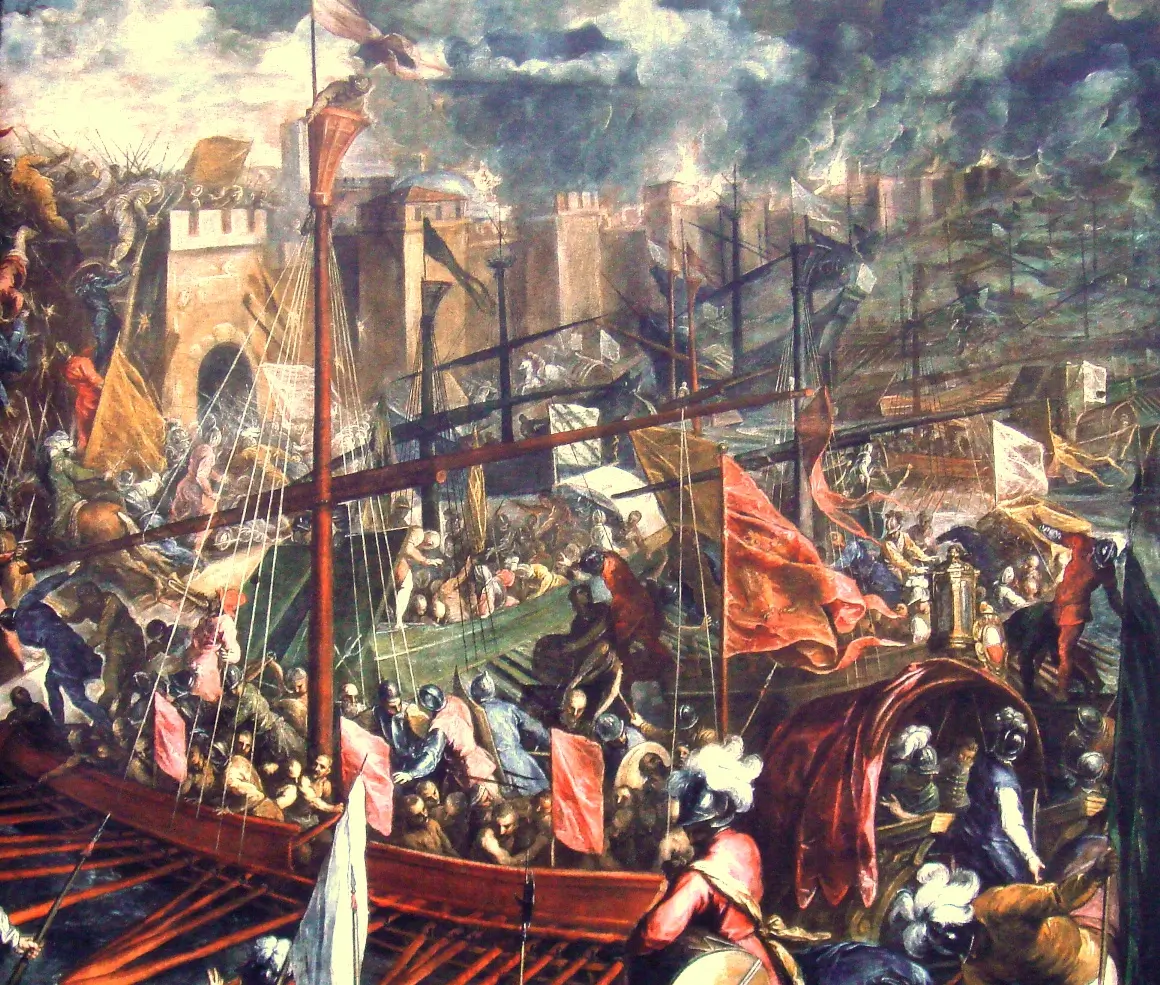Ciao amici! 💕 Venice, the enchanting floating city of canals, gondolas, and breathtaking architecture, has a fascinating connection with another legendary city – Constantinople (modern-day Istanbul). These two powerhouses of the medieval world were linked by trade, conquest, and a rich exchange of culture and art that shaped the very soul of Venice. From golden mosaics to stolen treasures, the legacy of Constantinople lives on in the heart of Venice today.
A Historic Connection Rooted in Trade
Venice and Constantinople’s relationship began as a mutually beneficial one, with Venice thriving as a maritime republic and Constantinople as the capital of the Byzantine Empire. As early as the 9th century, Venice became a crucial trading partner with the Byzantines, bringing silk, spices, and precious goods from the East into Western Europe.
By the 11th century, Venetian merchants were granted special privileges by the Byzantine emperors, allowing them to dominate trade routes and establish themselves as key economic players. The wealth amassed through this trade helped Venice flourish into the cultural and artistic powerhouse we know today.
The Fourth Crusade & The Sack of Constantinople
One of the most dramatic chapters in the connection between these two cities came in 1204, during the infamous Fourth Crusade. What was originally intended as a campaign to reclaim the Holy Land took an unexpected turn – Venetian-led Crusaders, instead of heading to Jerusalem, diverted to Constantinople. The city was brutally sacked, and vast amounts of treasures and relics were seized and brought back to Venice.
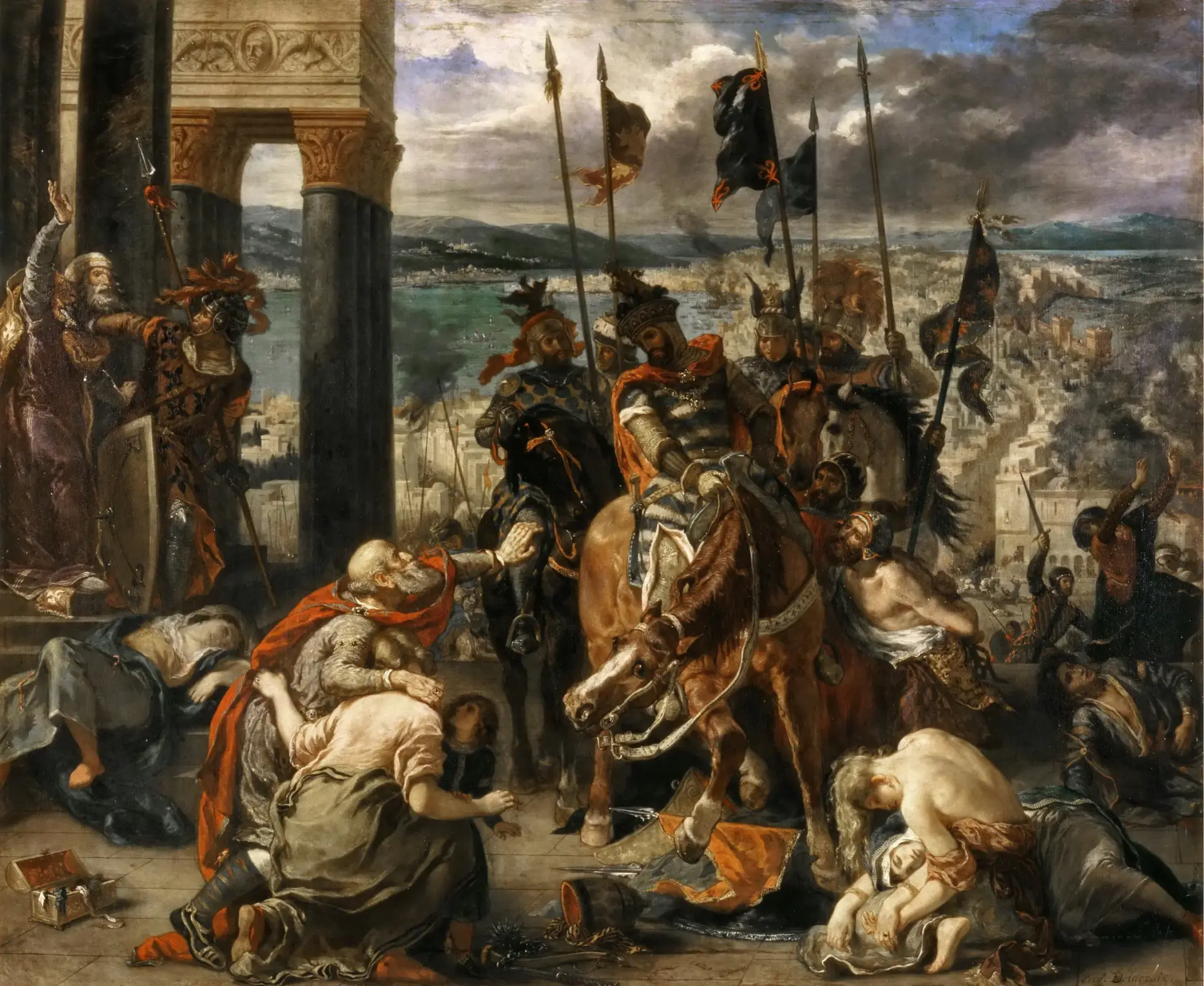
Among the most famous spoils of war were the iconic Horses of St Mark, which had once adorned the Hippodrome of Constantinople. These magnificent bronze sculptures were taken back to Venice and placed atop St Mark’s Basilica, becoming symbols of the city’s rising power. While the originals have since been moved inside the basilica for preservation, replicas still stand proudly, reminding visitors of Venice’s historical triumph.
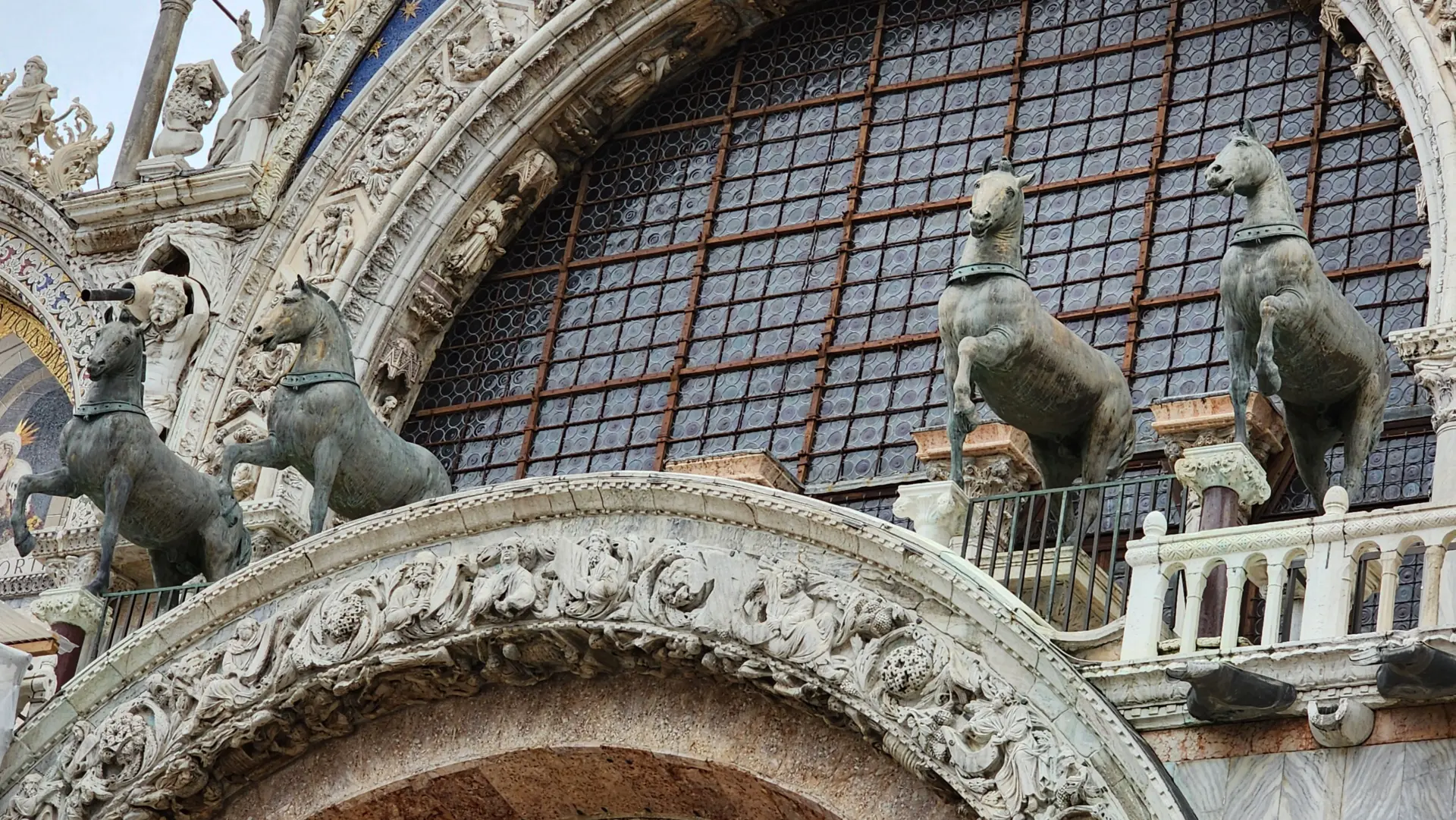
Byzantine Influence on Venetian Art & Architecture
Venice’s architectural beauty owes much to the artistic influence of Constantinople. Nowhere is this more evident than in St Mark’s Basilica, a stunning masterpiece inspired by the Byzantine style of the Hagia Sophia in Constantinople.
Imagine walking into the basilica and being surrounded by:
Golden mosaics: Reflecting opulence and intricate storytelling, these mosaics depict biblical scenes in shimmering gold, reminiscent of Byzantine churches like Hagia Sophia.
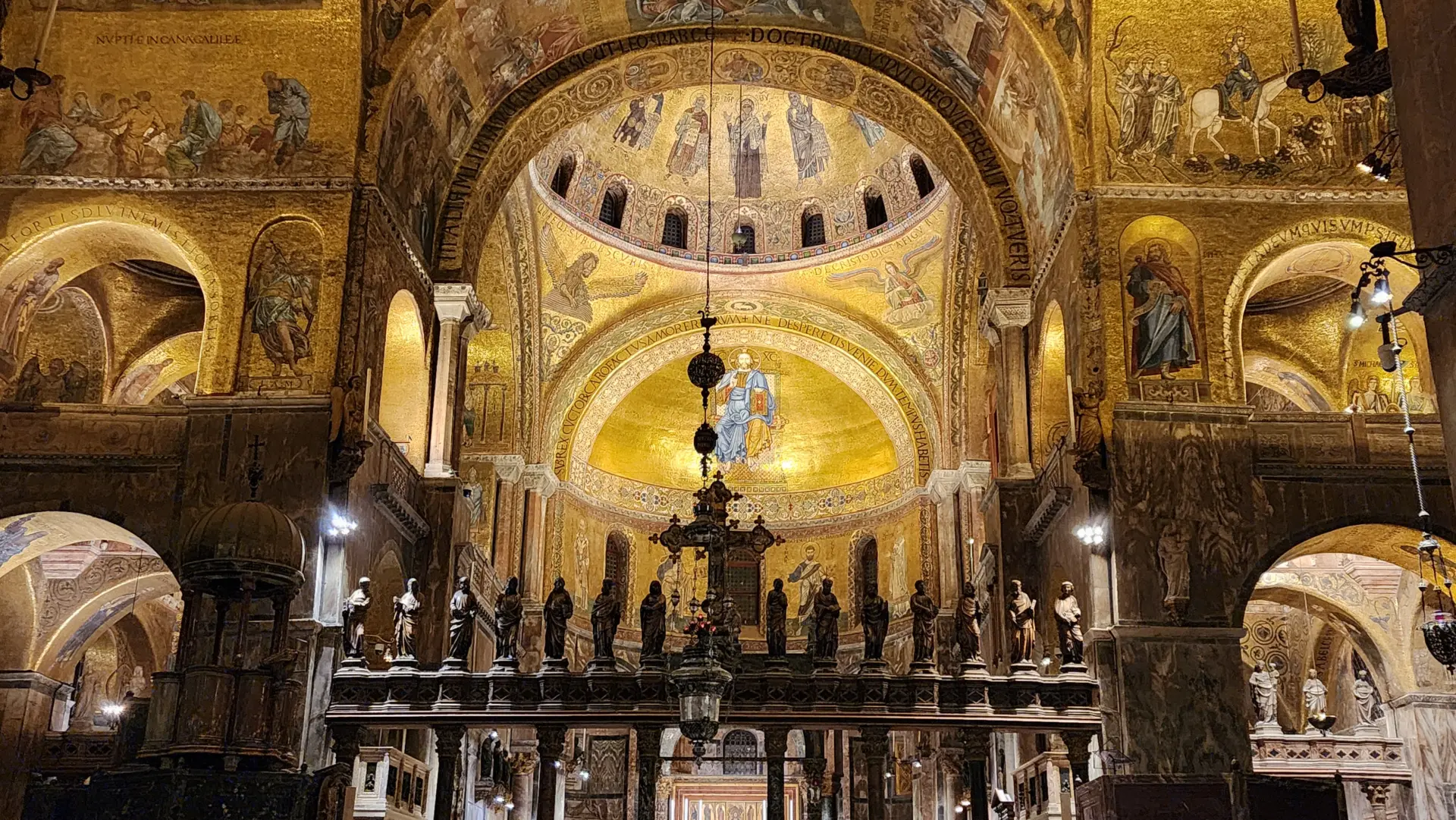
Domes and arches: Inspired by Constantinople’s great cathedrals, the basilica’s domes create a celestial feel, blending structural grandeur with artistic precision.
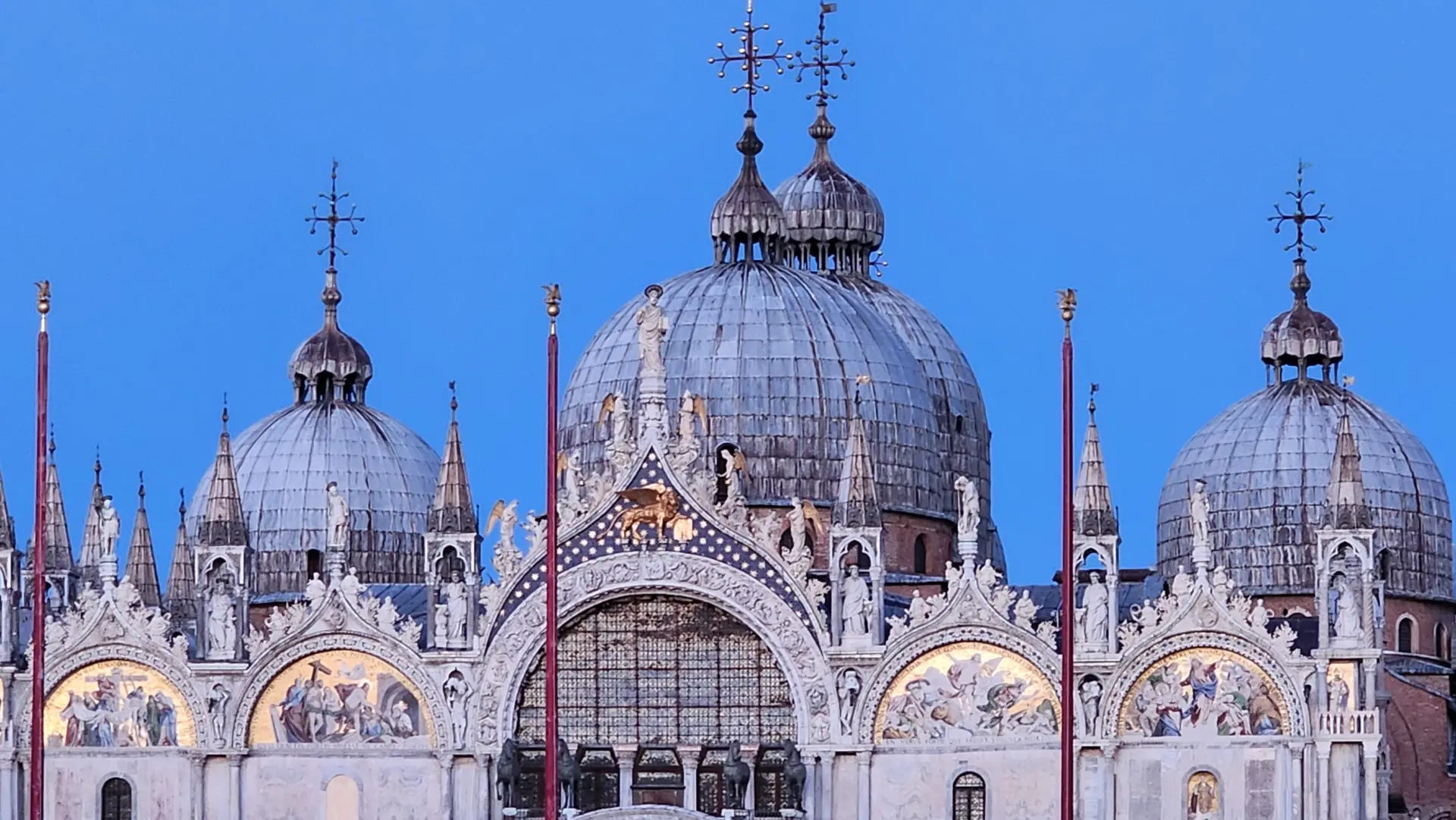
Relics and treasures: Many sacred relics and treasures, including icons and artifacts, were brought from Constantinople and integrated into Venetian culture.
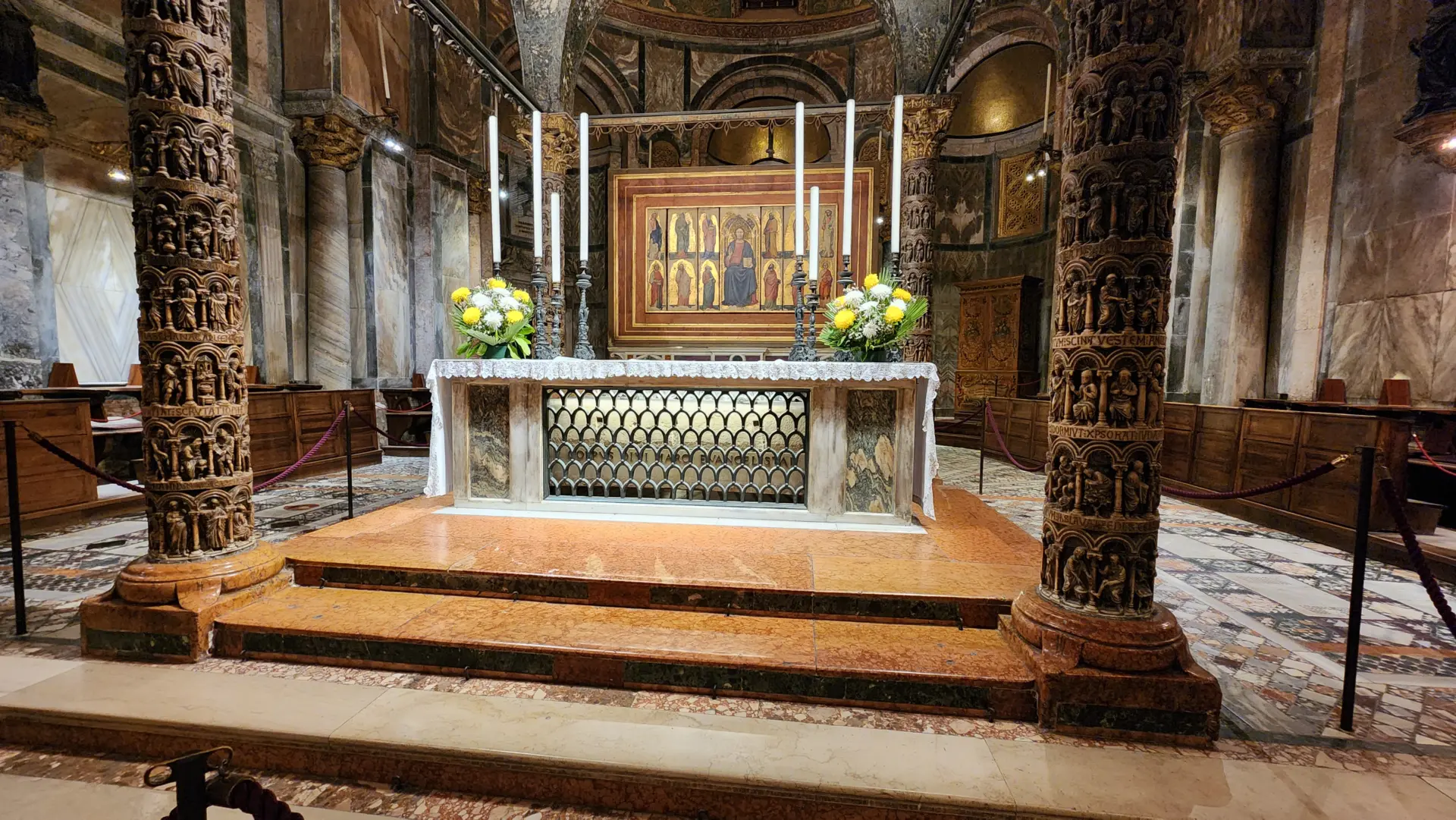
Beyond St. Mark’s Basilica, Byzantine artistry weaves through Venice’s fabric. The intricate carvings of palaces along the Grand Canal, the vibrant mosaics in churches, and the detailed craftsmanship of local artisans showcase how deeply Constantinople influenced Venetian art.
Exploring Venice’s Byzantine Legacy Today
If you’re visiting Venice and want to step back in time to explore its Byzantine connections, here are some additional must-visit spots:
Doge’s Palace: Once the seat of Venetian power, the Doge’s Palace houses many Byzantine-influenced artworks and relics.
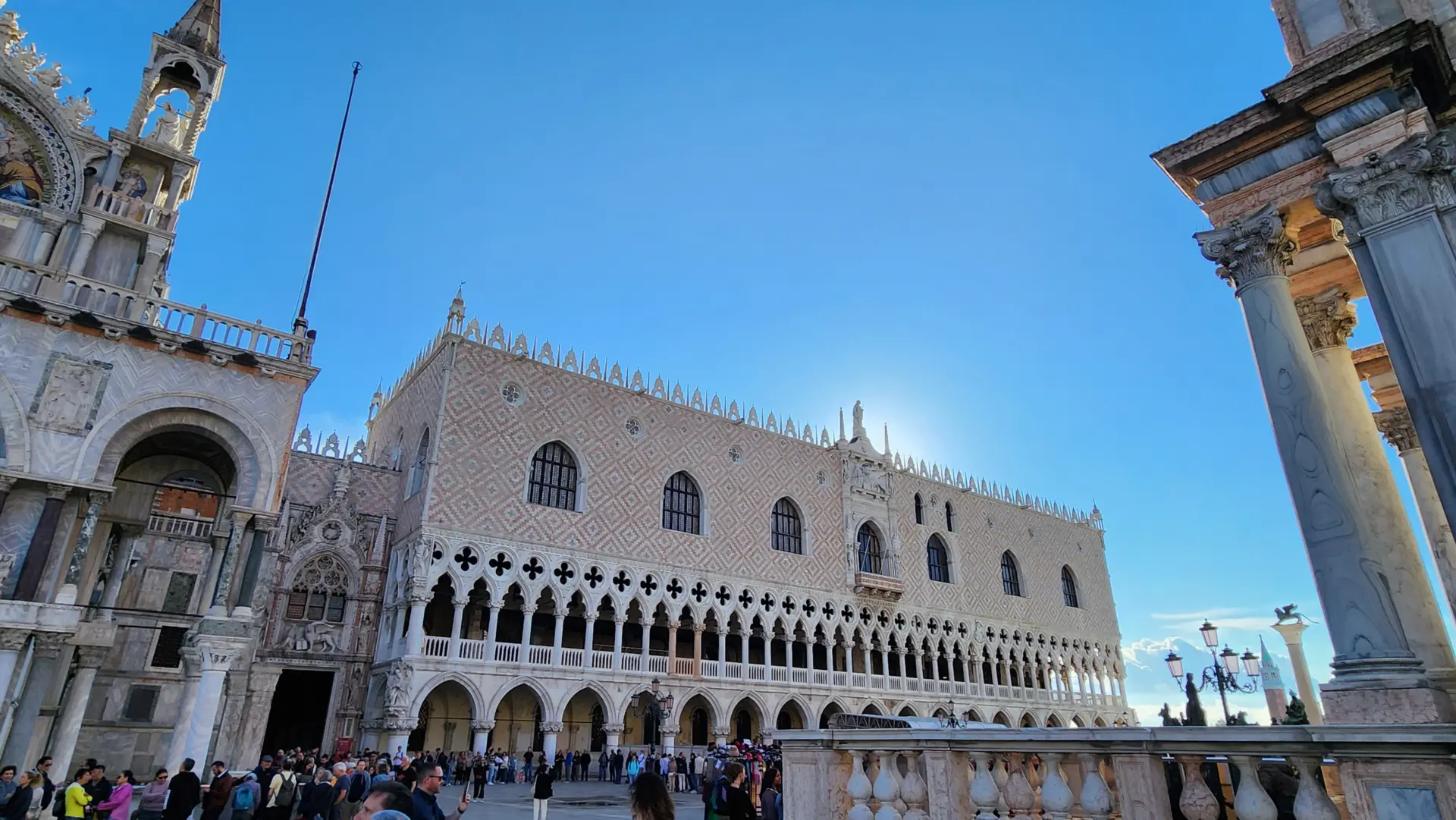
Museo Correr: Located in Piazza San Marco, the Museo Correr offers an in-depth look at Venice’s historical connection to the East, including art and artifacts from the Byzantine period.
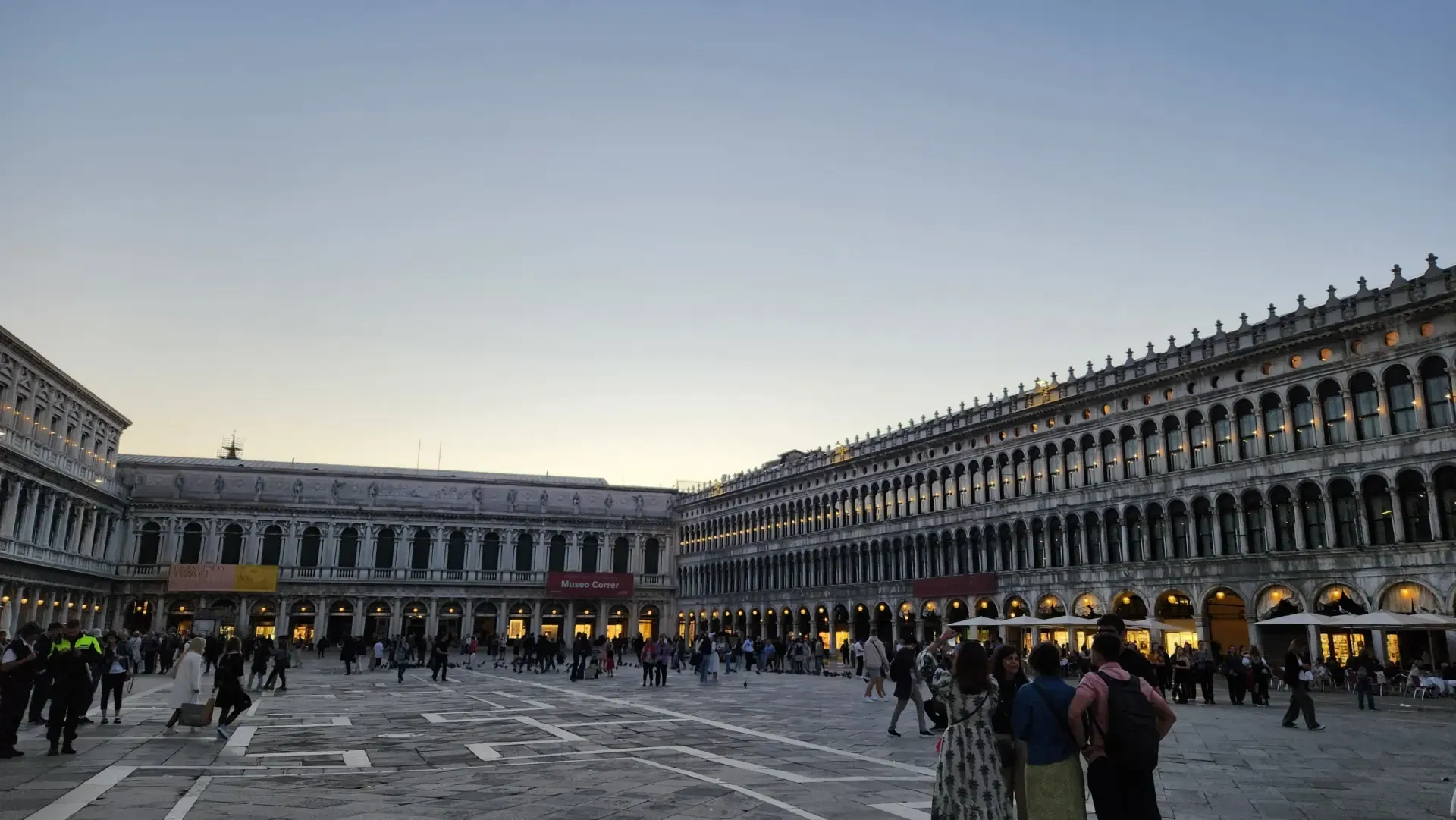
Final Thoughts
Though the Byzantine Empire has long since faded into history, its influence on Venice endures. The intricate art, the shimmering mosaics, and the iconic treasures that made their way from Constantinople to Venice serve as a testament to a time when these two cities were at the crossroads of culture and commerce.
Until next time, stay curious, stay adventurous, and stay bubbly!
xoxo,
Bubbly 💕

